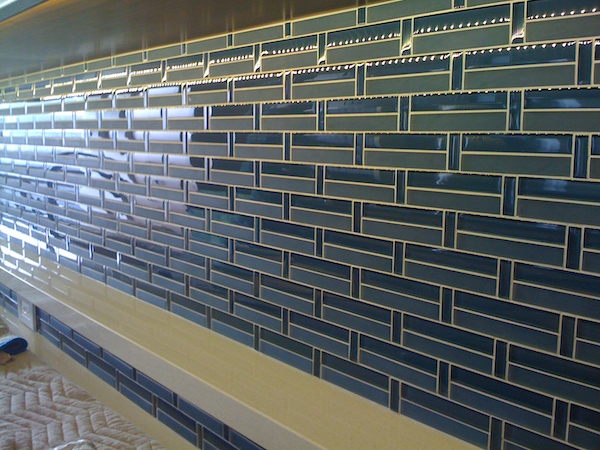
Tile maintenance is an important part of owning tile because it will ensure that your new tile remains as beautiful a few years down the road as it did the day it was laid down. Here’s a list of a few basic maintenance tips, as well as some common maintenance challenges and solutions, that will help you get the most longevity out of your new tile surface.
Basic Tile Maintenance Tips
Lay down door mats or rugs at all entryways to your home. Keeping dirt, grit, and sand off of your tile is key to keeping your tile looking new, especially with flooring. Most of the dirt and soil that is brought into your home will be dropped within six feet of your entryways. Having a mat or rug in those areas will help you to keep dirt where it belongs—outside. Also, make it a regular habit to sweep or dust mop your tile for the same reasons.
Mop or wipe down your tile regularly using an appropriate cleaner (avoid cleaners that are vinegar or soap based). Never use abrasive cleaners or cleaning aids, such as steel wool or rough scrub brushes, to clean your tile.
Remove mildew and other stains to your grout by throwing together a weak mixture of bleach and water and applying it to the stains with a rag or washcloth. For more stubborn stains use a small scrubbing tool (a toothbrush works great) to get the grout clean.
Consider having your tile sealed after installation. Most ceramic tiles are glazed, meaning you shouldn’t have to worry about water or other liquids penetrating the surface and staining the tile. If your tile isn’t glazed, however, or if you have stone tile, you can apply a sealant to the surface of the tile that will make it water and oil resistant. Keep in mind, however, that sealants make for a very slick surface when wet, something that is particularly important to consider if your sealing project involves flooring tile of any stripe.
Chipped or Loose Tiles
Since the majority of the tile on the market today is ceramic in nature, chipped tiles are a fact of life for any tile owner. If you have a chipped tile it can be replaced by removing the grout around the offending tile and replacing it with a new piece. It’s fairly easy to damage the tiles surrounding it in the process if you don’t know what you’re doing, however, so it’s a good idea to call a certified tile repairman to do this work for you to prevent this relatively small project from turning into much larger one.
Ready to start your tile maintenance?
Find ProsLoose tiles can be a problem, but they don’t necessarily require removal and replacement of the entire surface. Often loose tiles rear their ugly heads in showers, tubs, bathrooms, and around sinks, and are indicators of water penetration and damage. Depending on the amount of water damage to the substrate, the tile can either simply reapplied or you may be in for a bigger repair that includes replacing the damaged portion of the substrate as well. Unless you’re well versed in things such as drywall patching or substrate removal and replacement, you probably want to contact a tile repairman or tile installer for this big of a job.
Save the Leftovers!
One of the most important tile maintenance steps you can take to ensure a long-lasting and uniform tile job is simply to be sure to order some extra tiles at the time of installation and store them somewhere out of sight for later repairs. Because the process of making ceramic tiles involves individual firings that produce minor variations in color and texture, and because stone tiles will naturally vary depending on where and when they’re quarried, you can’t count on being able to get the perfect match later in the event of having to replace chipped or otherwise damaged tiles. The only way to ensure that your replacement tile will match the originals is to keep a batch of original tiles on hand in case replacement becomes necessary later on.
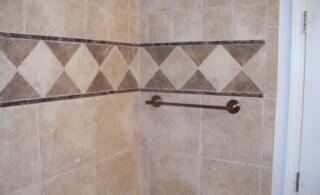 The Basics of Ceramic Wall Tile Installation
The Basics of Ceramic Wall Tile Installation 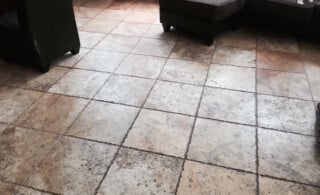 Stunning Travertine Tile
Stunning Travertine Tile 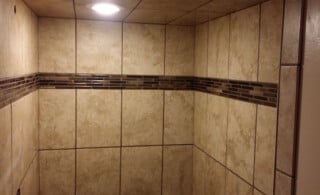 Ceramic Wall Tiles
Ceramic Wall Tiles  How to Build a Custom Tiled Shower Pan
How to Build a Custom Tiled Shower Pan 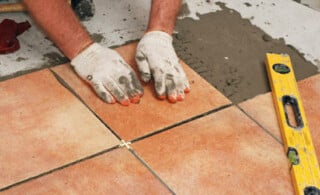 Drying Time for Tile
Drying Time for Tile 

Are You Familiar With This Topic? Share Your Experience.